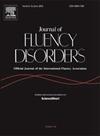How reliable and useful are social media videos about stuttering? A comprehensive evaluation of content and credibility
IF 2.1
3区 医学
Q1 AUDIOLOGY & SPEECH-LANGUAGE PATHOLOGY
引用次数: 0
Abstract
Adults who stutter (AWS) often turn to social media platforms to connect with others, exchange personal experiences and access informational content. This study aimed to assess the reliability, quality, understandability, and actionability of videos about stuttering on these platforms, evaluating them based on both content and source. The most relevant YouTube keywords related to stuttering were identified using Google Trends, and popular Instagram hashtags were determined through Later Application. Videos from the first three pages for each keyword were analyzed for YouTube, and the top 100 videos with the highest engagement for each hashtag were selected using Python for Instagram. Speech and Language Therapists (SLTs) rated the videos using the Modified Quality Criteria for Consumer Health Information (M-DISCERN), Global Quality Score (GQS), and Patient Education Materials Assessment Tool (PEMAT). The analysis also included the number of ratings and likes on comments. Videos created by SLTs on YouTube and Instagram are more reliable and of higher quality compared to videos on AWS and non-expert sources (p < .001). On YouTube, videos created by SLTs are superior in quality, reliability, comprehensibility compared to videos produced by other healthcare professionals (p < .001). Additionally, videos on AWS receive a greater number of positive comments compared to videos from SLTs and other healthcare professionals (p < .001). AWS should carefully consider the content and source of the videos they watch. There is a need for greater social awareness, and SLTs should be encouraged to produce high-quality content on social media platforms to ensure the dissemination of accurate and helpful information.
关于口吃的社交媒体视频有多可靠和有用?综合评价内容和可信度
口吃成年人(AWS)经常利用社交媒体平台与他人联系、交流个人经历和获取信息。本研究旨在评估这些平台上有关口吃的视频的可靠性、质量、可理解性和可操作性,并根据内容和来源对其进行评估。通过谷歌趋势确定了与口吃最相关的 YouTube 关键词,并通过 Later Application 确定了 Instagram 的流行标签。对于 YouTube,我们分析了每个关键词前三页的视频;对于 Instagram,我们使用 Python 挑选了每个标签参与度最高的前 100 个视频。语言治疗师(SLT)使用消费者健康信息质量标准(M-DISCERN)、全球质量评分(GQS)和患者教育材料评估工具(PEMAT)对视频进行评分。分析还包括评论的评分和点赞数。与 AWS 和非专家来源的视频相比,SLT 在 YouTube 和 Instagram 上创建的视频更可靠、质量更高(p <.001)。在 YouTube 上,与其他医疗保健专业人员制作的视频相比,SLT 制作的视频在质量、可靠性和可理解性方面更胜一筹(p < .001)。此外,与 SLT 和其他医疗专业人员制作的视频相比,AWS 上的视频获得了更多的正面评论(p <.001)。亚博app客服生应仔细考虑所观看视频的内容和来源。需要提高社会意识,应鼓励 SLT 在社交媒体平台上制作高质量的内容,以确保传播准确、有用的信息。
本文章由计算机程序翻译,如有差异,请以英文原文为准。
求助全文
约1分钟内获得全文
求助全文
来源期刊

Journal of Fluency Disorders
AUDIOLOGY & SPEECH-LANGUAGE PATHOLOGY-REHABILITATION
CiteScore
3.70
自引率
14.30%
发文量
23
审稿时长
>12 weeks
期刊介绍:
Journal of Fluency Disorders provides comprehensive coverage of clinical, experimental, and theoretical aspects of stuttering, including the latest remediation techniques. As the official journal of the International Fluency Association, the journal features full-length research and clinical reports; methodological, theoretical and philosophical articles; reviews; short communications and much more – all readily accessible and tailored to the needs of the professional.
 求助内容:
求助内容: 应助结果提醒方式:
应助结果提醒方式:


